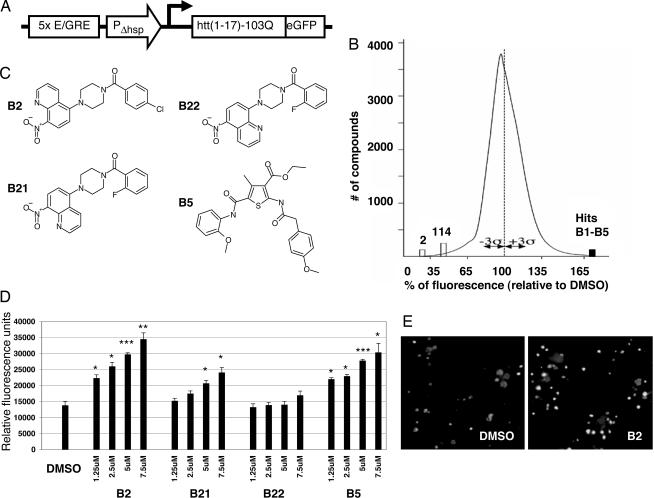Fig. 1.
The compound B2 increases polyQ–EGFP reporter inclusions and overall fluorescence. (A) Schematic representation of the reporter construct used in high-throughput screen. An ecdysone-inducible promoter drives expression of a fusion of the first 17 aa of Htt plus 103 glutamines and EGFP. (B) Distribution of hits from high-throughput screen of 37,000 chemical compounds. A total of 116 compounds decreased the EGFP signal by ≥35% and 5 compounds increased the signal by ≥50% (black bar). (C) Structures of B2, its analogs B21 and B22, and B5. (D) Reporter readout from a range of doses of B2 or its analogs B21 and B22. B2 causes a dose-dependent increase in polyQ–EGFP reporter. Analog B21 is less effective than B2, and B22 shows no activity. ∗, P < 0.05; ∗∗, P < 0.01; ∗∗∗, P < 0.005. (E) Fluorescence microscopy of cells from wells treated with either DMSO or 5 μM B2. Cells treated with B2 show an increase in polyQ–EGFP inclusion formation. (Magnification: ×10.)

